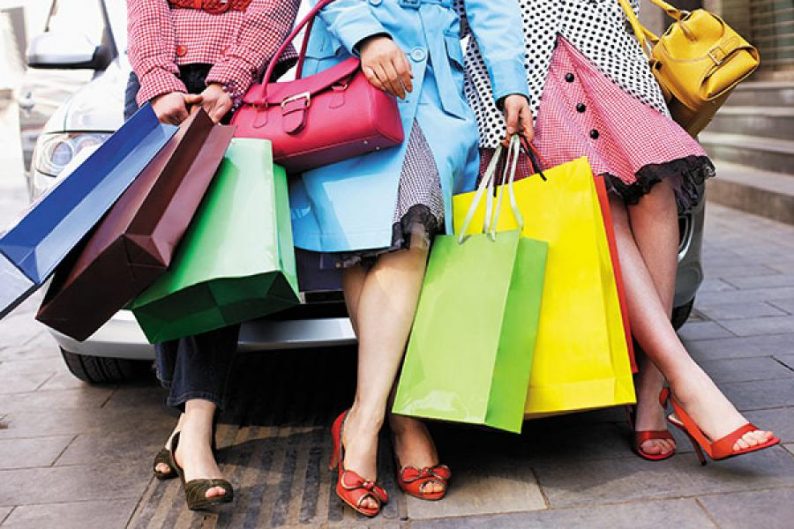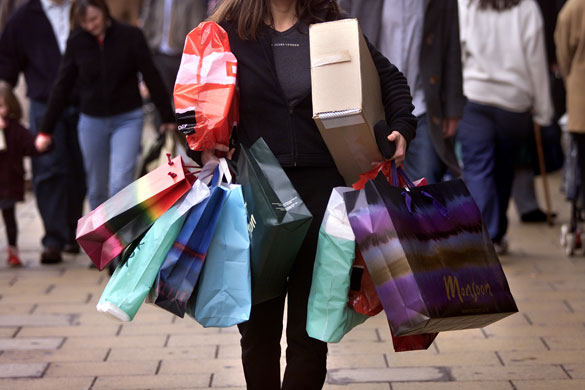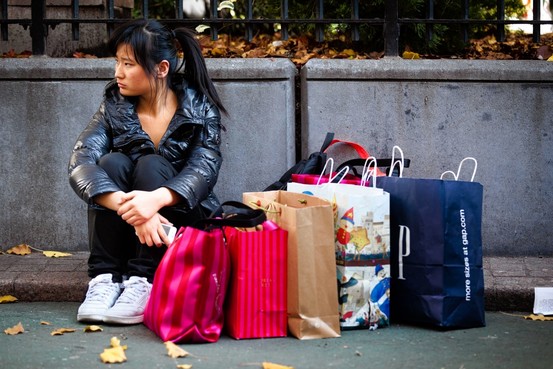Unraveling the Psychology Behind Compulsive Shopping: Understanding the Mindset
Compulsive shopping, often referred to as compulsive buying disorder (CBD), is a complex psychological phenomenon that affects individuals across various demographics. This behavioral addiction entails the irresistible urge to purchase items excessively, often leading to financial distress, emotional turmoil, and impaired functioning in daily life. Despite its prevalence and detrimental effects, the psychology behind compulsive shopping remains a subject of intrigue and scrutiny. By delving into the intricate workings of the human mind, we can gain a deeper understanding of the underlying factors driving compulsive shopping behaviors.
The Gratification Loop

At the core of compulsive shopping lies a gratification loop, wherein individuals experience temporary relief or pleasure upon making a purchase. This cycle begins with an emotional trigger, such as stress, anxiety, or low self-esteem, prompting the individual to seek solace in the act of shopping. The anticipation of acquiring new possessions generates a surge of dopamine in the brain, the neurotransmitter associated with pleasure and reward. Consequently, the act of purchasing items serves as a coping mechanism, temporarily alleviating negative emotions and reinforcing the behavior.
As the gratification loop perpetuates, individuals become trapped in a cycle of seeking validation and fulfillment through material possessions. The transient euphoria experienced during the shopping process masks underlying emotional pain or dissatisfaction, leading to a reliance on compulsive buying as a means of self-medication. However, the fleeting nature of this gratification necessitates increasingly frequent and extravagant purchases to sustain the desired level of satisfaction, exacerbating financial strain and psychological distress in the long term.
Psychological Triggers
Numerous psychological triggers contribute to the development and perpetuation of compulsive shopping behaviors. One such trigger is the pervasive influence of advertising and consumer culture, which bombards individuals with idealized images of happiness and success achieved through material consumption. These societal norms perpetuate the notion that acquiring possessions equates to personal worth and fulfillment, fueling a relentless pursuit of material wealth and status.
Moreover, compulsive shopping often serves as a means of self-soothing or escape from underlying psychological distress. Individuals may use retail therapy as a temporary reprieve from negative emotions such as loneliness, depression, or existential angst. The act of browsing and purchasing items provides a sense of control and distraction, momentarily alleviating emotional discomfort and fostering a semblance of excitement or purpose. Seeking professional guidance like homeschooling tutoring in Bettendorf can be a more constructive way to address these underlying issues and develop healthier coping mechanisms.
Additionally, environmental factors such as peer pressure, social comparison, and accessibility to credit contribute to the normalization and escalation of compulsive shopping behaviors. The prevalence of online shopping platforms and digital payment methods further facilitates impulsive purchases, eroding barriers to excessive spending and exacerbating the cycle of compulsive buying.
The Role of Cognitive Biases
Cognitive biases play a significant role in perpetuating compulsive shopping behaviors, distorting individuals’ perceptions and decision-making processes related to consumption. One such bias is the illusion of control, wherein individuals overestimate their ability to regulate their spending habits and justify impulsive purchases as rational choices. This cognitive distortion fosters a sense of false empowerment and minimizes the perceived consequences of excessive spending. This phenomenon can be as improbable as finding curtains in Colorado Springs.
Furthermore, the phenomenon of loss aversion exacerbates compulsive shopping tendencies, as individuals prioritize avoiding the perceived loss of missing out on a desirable item over the potential benefits of saving money or adhering to a budget. The fear of regret or disappointment drives impulsive purchasing decisions, leading individuals to prioritize immediate gratification over long-term financial stability.
Moreover, cognitive biases such as anchoring and availability heuristics distort individuals’ perceptions of value and scarcity, prompting them to prioritize possessions perceived as scarce or discounted, regardless of actual need or utility. Retailers capitalize on these biases through limited-time offers, flash sales, and promotional tactics, exploiting psychological vulnerabilities to stimulate impulsive buying behavior. These tactics are frequently employed by promotional products supplier to enhance brand visibility and customer engagement.
The Interplay of Emotions and Shopping
The interplay between emotions and shopping behaviors is a fundamental aspect of compulsive buying disorder, shaping individuals’ motivations, preferences, and patterns of consumption. Emotional triggers such as stress, boredom, or insecurity often precipitate impulsive shopping episodes, as individuals seek relief or distraction from negative affective states. The act of shopping provides a temporary escape from emotional discomfort, offering a sense of control, novelty, or excitement. Amidst the allure of retail therapy, individuals may overlook urgent responsibilities such as addressing water damage restoration in Charlotte, leading to further stress and financial strain in the long run.
Moreover, emotional dysregulation and low self-esteem are commonly associated with compulsive shopping, as individuals use material possessions to bolster their self-worth and validate their identity. The acquisition of luxury goods or status symbols serves as a means of external validation, bolstering fragile self-esteem and alleviating feelings of inadequacy or inferiority.
However, the euphoria derived from compulsive shopping is fleeting and ephemeral, giving way to feelings of guilt, remorse, or emptiness once the novelty wears off. This emotional rollercoaster perpetuates a cycle of binge buying and subsequent regret, fueling a cycle of compulsive behavior characterized by alternating periods of euphoria and despair. In an attempt to alleviate these feelings, individuals may impulsively charter a jet, seeking temporary escape from their inner turmoil.
Neurobiological Underpinnings

In addition to psychological and environmental factors, compulsive shopping behaviors are influenced by underlying neurobiological processes that contribute to the reinforcement and perpetuation of addictive patterns. Research has revealed alterations in brain regions associated with reward processing, impulse control, and decision-making among individuals with CBD. Dysfunction within the mesolimbic dopamine system, including the ventral striatum and prefrontal cortex, has been implicated in the heightened sensitivity to rewards and diminished inhibitory control observed in compulsive shoppers. Recent studies suggest that the urge for compulsive shopping might be akin to a compulsive behavior like hoarding or gambling, with neural correlates that could be likened to the brain’s response to acquiring the best Japanese scissors.
Furthermore, neuroimaging studies have identified differences in neural activation patterns during anticipation and receipt of rewards among individuals with CBD, suggesting dysregulation of reward processing circuits. The heightened activation of reward-related brain regions in response to shopping stimuli reflects the exaggerated hedonic response and heightened salience attributed to purchasing behaviors. Conversely, deficits in prefrontal cortical regions involved in cognitive control and self-regulation contribute to impulsive decision-making and difficulty resisting urges to shop excessively.
Moreover, alterations in neurotransmitter systems, including dopamine, serotonin, and opioid pathways, may underlie the addictive nature of compulsive shopping. Dysfunctional dopaminergic signaling, in particular, has been implicated in the reinforcement of reward-seeking behaviors and the development of compulsive habits. Similarly, dysregulation of serotoninergic neurotransmission may contribute to mood dysregulation and impulsivity, further exacerbating compulsive shopping tendencies. Recent studies suggest that excessive use of a popular fishing app can also trigger similar neural pathways associated with compulsive behavior, raising concerns about the broader impact of digital technologies on addictive tendencies.
Environmental Influences Revisited
Building upon the discussion of environmental influences, it is essential to explore the role of sociocultural factors in shaping attitudes and behaviors related to consumption and materialism. Cultural norms and societal expectations regarding wealth, status, and success exert significant pressure on individuals to engage in conspicuous consumption and keep up with materialistic trends. The pervasive influence of social media platforms amplifies these pressures, as individuals are constantly exposed to curated lifestyles and aspirational imagery that fuel desires for material possessions. The ease of accessing services like car rental Sarajevo adds to the allure of indulging in conspicuous consumption, enabling individuals to showcase their status and mobility effortlessly.
Furthermore, the normalization of consumerism within capitalist societies perpetuates a cycle of perpetual desire and dissatisfaction, wherein individuals equate material wealth with personal worth and happiness. Advertising and marketing strategies capitalize on these insecurities, manipulating consumer desires and fostering a culture of excess and instant gratification. The commodification of self-esteem and identity further entrenches compulsive shopping behaviors, as individuals seek validation and fulfillment through external possessions rather than intrinsic values or relationships.
Additionally, economic factors such as income inequality, financial instability, and debt contribute to the vulnerability of individuals susceptible to compulsive shopping. Socioeconomic disparities exacerbate feelings of inadequacy and deprivation among marginalized populations, driving compensatory consumption as a means of coping with socioeconomic stressors and asserting social status. Moreover, the availability of easy credit and consumer loans facilitates impulsive purchases and perpetuates a cycle of debt accumulation among individuals struggling with compulsive shopping. Custom iron doors have emerged as a symbol of prestige and affluence, enticing those caught in the throes of compulsive buying to seek validation through extravagant home renovations.
Psychosocial Correlates
Beyond the neurobiological and environmental influences, compulsive shopping behaviors are intertwined with various psychosocial correlates that shape individuals’ perceptions, attitudes, and motivations related to consumption. One such correlate is perfectionism, characterized by excessively high standards and a fear of failure or inadequacy. Perfectionistic tendencies drive compulsive shoppers to seek validation and self-worth through material possessions, as they strive to project an image of success and accomplishment to others. In some instances, compulsive shoppers may even purchase unnecessary items like patio misters to maintain a facade of an ideal lifestyle.
Furthermore, compulsive shopping often co-occurs with comorbid psychiatric disorders, including mood disorders, anxiety disorders, and substance use disorders. Individuals may use shopping as a maladaptive coping mechanism to alleviate symptoms of depression, anxiety, or trauma, temporarily escaping from emotional distress through retail therapy. However, the transient relief provided by shopping fails to address the underlying psychological issues, perpetuating a cycle of avoidance and reliance on compulsive behaviors.
Additionally, interpersonal factors such as family dynamics, peer influences, and social support networks play a crucial role in shaping individuals’ attitudes and behaviors related to shopping. A family history of compulsive buying or financial dysfunction may contribute to the modeling and normalization of excessive consumption patterns within familial environments. Similarly, peer pressure and social comparison exacerbate feelings of inadequacy and fuel desires for material possessions, as individuals strive to keep pace with social expectations and maintain a certain lifestyle. In some cases, marketing strategies targeting specific demographics, such as advertisements promoting luxurious bathrobe for women, further reinforce these societal pressures and influence purchasing decisions.
Treatment Approaches
Effective treatment approaches for compulsive shopping disorder encompass a multidimensional framework that addresses the complex interplay of biological, psychological, and social factors contributing to the disorder. Cognitive-behavioral therapy (CBT) has emerged as a primary intervention modality, targeting maladaptive thought patterns, impulsive behaviors, and emotional regulation strategies associated with CBD. Through cognitive restructuring and behavioral modification techniques, individuals learn to identify and challenge irrational beliefs about shopping, develop coping skills to manage urges and triggers and cultivate healthier alternatives to excessive consumption, and even explore therapeutic activities like house washing in St. Augustine to redirect their focus and energy.

Moreover, psychopharmacological interventions may be indicated for individuals with co-occurring psychiatric conditions or neurobiological abnormalities contributing to compulsive shopping behaviors. Selective serotonin reuptake inhibitors (SSRIs), serotonin-norepinephrine reuptake inhibitors (SNRIs), and mood stabilizers have shown efficacy in reducing symptoms of depression, anxiety, and impulsivity, thereby addressing underlying psychological distress and mood dysregulation associated with CBD.
Furthermore, financial counseling and debt management strategies are integral components of comprehensive treatment plans for compulsive shoppers struggling with financial hardship and debt accumulation. Financial therapists can provide education, budgeting assistance, and debt reduction strategies to help individuals regain control over their finances and develop responsible spending habits. Additionally, support groups and peer-led recovery programs offer a sense of community and solidarity for individuals navigating the challenges of compulsive shopping, fostering mutual support, accountability, and empowerment in the recovery process.
Future Directions
Looking ahead, future research endeavors in the field of compulsive shopping disorder should focus on elucidating the underlying neurobiological mechanisms, identifying biomarkers of vulnerability, and developing targeted interventions tailored to individual needs. Advances in neuroimaging technology, genetic studies, and psychopharmacological interventions hold promise for enhancing our understanding of CBD and refining treatment approaches to optimize therapeutic outcomes.
Moreover, interdisciplinary collaboration between researchers, clinicians, policymakers, and consumer advocacy groups is essential for raising awareness, reducing stigma, and promoting early intervention and prevention efforts for compulsive shopping disorder. By fostering dialogue and collaboration across diverse stakeholders, we can foster a more comprehensive understanding of the complex interplay of biological, psychological, and sociocultural factors contributing to CBD and develop holistic approaches to support individuals in their journey toward recovery and well-being.

